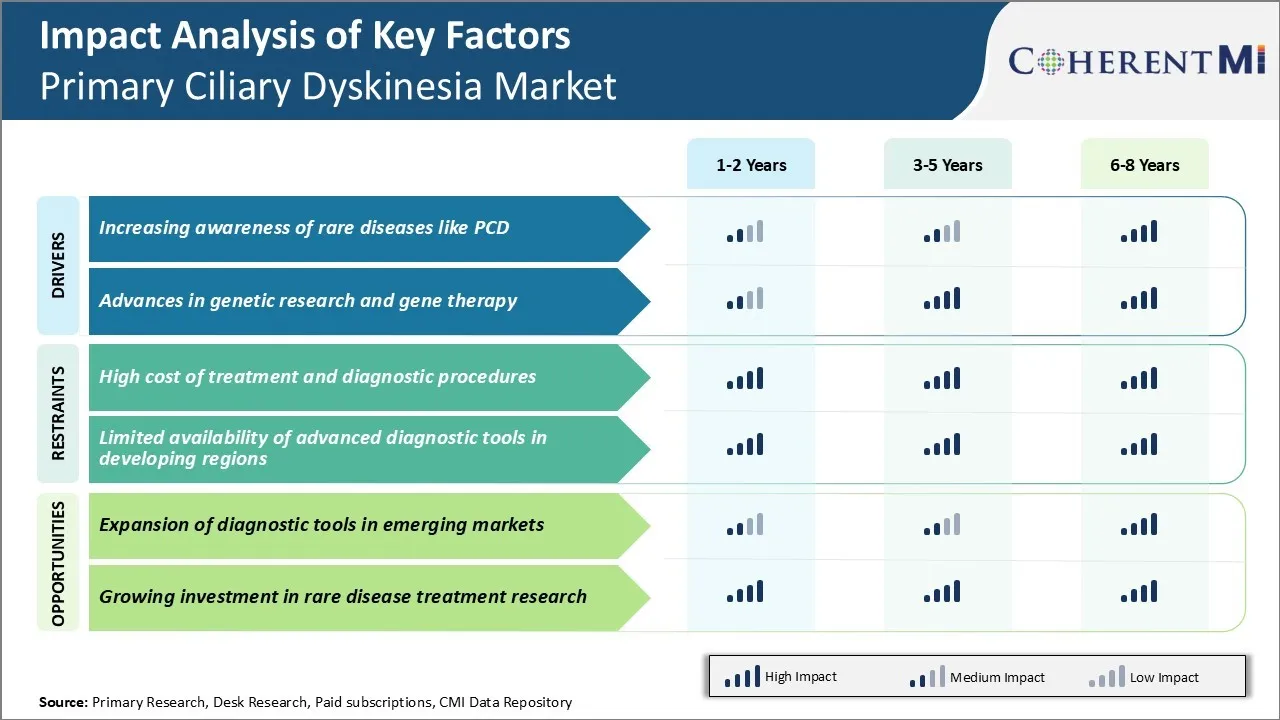Primary Ciliary Dyskinesia Market Trends
Market Driver - Increasing Awareness of Rare Diseases like PCD
For too long, primary ciliary dyskinesia flew under the radar of even many physicians. Studies have shown that delay in diagnosis of primary ciliary dyskinesia averages around 7 years from initial presentation of symptoms. A lack of awareness among some specialists has meant missed opportunities for patients to access specialized treatment sooner.
However, with greater prominence of primary ciliary dyskinesia in medical literature and conferences, more doctors are learning about its signs and learning how to test for it properly. Major teaching hospitals have also established dedicated rare disease clinics where primary ciliary dyskinesia is now routinely considered in the differential diagnosis of children with recurrent wet coughs or issues like sinusitis and infertility that don't respond to usual treatments.
The growing recognition of the disease will help drive the primary ciliary dyskinesia market as improved diagnosis allows for earlier interventions. As awareness continues to spread to even more rural primary care physicians, earlier diagnosis rates for PCD will climb significantly. This factor is an important driver of increased demand in the primary ciliary dyskinesia market.
Market Driver - Advances in Genetic Research and Gene Therapy
Researchers have made major strides in recent years towards better understanding the genetics underlying primary ciliary dyskinesia. Advancing genome sequencing technologies have accelerated the discovery of new PCD-causing genes. To date, genetic testing can detect a definitive mutation in approximately 70% of patients clinically diagnosed with PCD. However, annually more candidate genes are identified through collaborations between research centers globally.
At the same time, progress in cellular and animal models of PCD allows scientists to closely study the effects of specific gene mutations. Among the most promising approaches are gene therapy and gene editing techniques like CRISPR. As the first gene therapy clinical trials for PCD get underway, this will energize the primary ciliary dyskinesia market and attract more investment funding for additional trials.
A definitive treatment restoring cilia function could profoundly impact patients' quality of life and reduce healthcare costs from years of management instead of cure. The primary ciliary dyskinesia market will grow substantially on the back of continued genetic research bringing forth new diagnostics and therapies closer to reality for this orphan disease population.

Market Challenge - High Cost of Treatment and Diagnostic Procedures
One of the major challenges being faced in the primary ciliary dyskinesia market is the high cost associated with treatment and diagnostic procedures. Currently, the treatment involves lifelong medication and airway clearance techniques to manage symptoms like chronic infections, bronchiectasis and sinusitis. These therapies come at a substantial recurring cost to patients.
Diagnosing PCD also requires specialized tests and equipment that are available only in select research centers. The tests include nasal or bronchial biopsy to examine cilia structure under electron microscopy. Special scanning electron microscopes capable of magnifying cilia are required which adds to the cost.
The tests are also time-consuming requiring samples to be sent to research labs. All these factors contribute to the high cost of diagnosis ranging between $5000 to $10000 in developed markets. This financial burden prevents many patients from getting timely and accurate diagnosis, creating a major challenge for players in the primary ciliary dyskinesia market.
Market Opportunity - Expansion of Diagnostic Tools in Emerging Markets
One of the key opportunities for growth in the primary ciliary dyskinesia market lies in expanding diagnostic capabilities to emerging countries. Currently, specialized diagnostic tests and infrastructure are concentrated only in developed nations of North America and Western Europe. This limits diagnosis to a small proportion of the global population.
Major diagnostic players in the primary ciliary dyskinesia market are focusing on developing portable, easy-to-use, and more affordable diagnostics tools. For example, development of molecular diagnostics tests based on genetic mutations can be performed in any clinical laboratory without the need for electron microscopy.
Similarly, handheld devices utilizing dark-field microscopy imaging of mucus samples allow point-of-care diagnostic screening. Expanding availability of such tools in regions like Asia, Latin America and Eastern Europe will help diagnose larger patient pools in the primary ciliary dyskinesia market. It will also reduce the time and costs involved in centralized testing. Incoming technologies are well positioned to tap into the sizable untreated patient population in emerging economies and drive the next phase of growth for primary ciliary dyskinesia market.